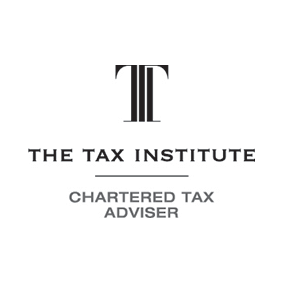Tax Saving Strategies Prior to 30 June 2023 for Business

Tax savings for your business
Bring forward the purchase of assets
If there are large assets your business needs to buy (or upgrade), you have until 30 June 2023 to use the temporary full expensing rules. These rules enable businesses with an aggregated turnover of up to $5bn to fully deduct the cost of the asset upfront rather than being claimed over the asset’s life, regardless of the cost of the asset.
The temporary full expensing rules are of benefit if your business would like to reduce the tax it pays in 2022-23, and the purchase of the asset is not going to put a strain on cashflow. If the business does not have tax to pay, and you utilise the rules, this will often give rise to a tax loss that can be carried forward to future years, although companies have access to some loss carry back rules for the 2022-23 year.
Timing is important. The asset needs to be “first held and ready for use” by the 30 June 2023 deadline to qualify for an immediate deduction in the 2023 tax return. Just having a contract in place won’t qualify if you have not taken possession of the asset.
If you are buying a work vehicle which is classified as a car and is mainly designed to carry passengers then remember that there are rules which limit the deductions that can be claimed if the cost of the car is above the car limit ($64,741 in 2022-23).
From 1 July 2023 until 30 June 2024, small businesses with an aggregated turnover below $10m will be able to immediately deduct assets costing less than $20,000 in the year of purchase using the instant asset write off. For other businesses, assets will be depreciated using the general depreciation rules over time.
Declare dividends to pay any outstanding shareholder loan accounts
If your company has advanced funds to a shareholder or related party, paid expenses or allowed a shareholder or other related party to use assets owned by the company, then this can be treated as a taxable dividend. The regulators expect that top-up tax (if any applies) should be paid by shareholders at their marginal tax rate once they have access to these profits. This is unless a complying loan agreement is in place.
If you have any shareholder loan accounts from prior years that were placed under complying loan agreements, the minimum loan repayments for the 2022-23 income year need to be made by 30 June 2023. It may be necessary for the company to declare dividends before 30 June 2023 to make these loan repayments.
Commit to directors’ fees and employee bonuses
Any expected directors’ fees and employee bonuses may be deductible for the 2022-23 financial year if you have ‘definitely committed’ to the payment of a quantified amount by 30 June 2023, even if the fee or bonus is paid to the employee or director after 30 June 2023 (within a reasonable time). You would generally be definitely committed to the payment by year-end if the directors pass a properly authorised resolution to make the payment by year-end. The employer should also notify the employee of their entitlement to the payment or bonus before year-end.
Write-off bad debts
You can claim a bad debt as a deduction if the income is brought to account as assessable income and you have given up all attempts to recover the debt. It needs to be written-off your debtors’ ledger by 30 June. If you don’t maintain a debtors’ ledger, a director’s minute confirming the write-off is a good idea.
Review your asset register and scrap any obsolete plant
Check to see if obsolete plant and equipment is sitting on your depreciation schedule. Rather than depreciating a small amount each year, if the plant has become obsolete, scrap it and write it off before 30 June. Small business entities can choose to pool their assets and claim one deduction for each pool. This means you only have to do one calculation for the pool rather than for each asset.
Bring forward repairs, consumables, trade gifts or donations
To claim a deduction for the 2022-23 financial year, consider paying for any required repairs, replenishing consumable supplies, trade gifts or donations before 30 June.
Pay June quarter employee super contributions before 30 June via ATO clearing house
Pay June quarter super contributions this financial year via the ATO clearing house if you want to claim a tax deduction in the current year. The next quarterly superannuation guarantee payment is due on 28 July 2023. However, some employers choose to make the payment early to bring forward the tax deduction instead of waiting another 12 months.
Realise any capital losses and reduce gains
Neutralise the tax effect of any capital gains you have made during the year by realising any capital losses – that is, sell the asset and lock in the capital loss. These need to be genuine transactions to be effective for tax purposes.
Raise management fees between entities by June 30
Where management fees are charged between related entities, make sure that the charges have been raised by 30 June. Where management charges are made, make sure they are commercially reasonable and documentation is in place to support the transactions. If any transactions are undertaken with international related parties then the transfer pricing rules need to be considered and the ATO’s documentation expectations will be much greater. This is an area under increased scrutiny.
Protecting against risk: Is it a business expense? Really?
For a few years now, very generous provisions have been in place that allow business to claim the cost of assets used in the business in the year of purchase instead of having to deduct them over time. But, this has led to some serious problems where some products have been promoted as being tax deductible without proper consideration being given to the way the tax rules operate.
Artwork is one example.
If your business buys an artwork to display in areas of your office where it would be viewed by clients, then assuming it is used in connection with your business and is likely to decline in value, the business can generally claim depreciation deductions for tax purposes. Depending on the situation, it might be possible to claim an immediate deduction. If, however, the artwork is displayed in a home office then the risk of the ATO querying this is much higher.
If the artwork is an investment piece and you expect it to appreciate in value, then it’s unlikely to be a depreciating asset and would not normally qualify for an immediate deduction.
Another scenario is a boat used for “marketing purposes”. If your business buys a boat, claims the cost of the boat and the expenses, the ATO will expect to see the benefit to your business of this and will be checking to see if the boat has been used privately by employees or shareholders (yes, they do look at your social media). If there is private usage of the boat then this can give rise to a range of complex tax issues. For example, this could trigger an FBT liability or a deemed unfranked dividend under the rules in Division 7A. It gets very messy.
In general, the ATO is likely to review any expense where the cost outweighs the likely value to the business of acquiring it, particularly for assets that people are likely to want for their own pleasure.
Super savings and strategies
Tax deductions for topping up super
You can make up to $27,500 in concessional contributions each year assuming your super balance has not reached its limit. If the contributions made by your employer or under a salary sacrifice agreement have not reached this $27,500 limit, you can make a personal contribution and claim a tax deduction for the contribution. It’s a great way to top up your super and reduce your tax.
For those aged between 67 and 74, you will need to meet the ‘work test’ to contribute personal concessional contributions and claim a deduction - you must have worked at least 40 hours within 30 consecutive days in a financial year before your super fund can accept voluntary contributions from you.
To be able to claim the tax deduction for these contributions, the contribution needs to be with the super fund before 30 June (watch out for processing times). You will also need to lodge a Notice of intent to claim or vary a deduction for personal super contributions with your super fund before you lodge your tax return to advise them of the amount you intend to claim as a deduction.
Bringing forward unused contribution caps
If your total super balance is below $500,000, and you have not reached your cap in the previous four years, you might be able to carry forward any unused contributions and make a larger tax deductible contribution this year. For example, if your total concessional contributions in the 2021-22 financial year were $10,000, you can ‘carry forward’ the unused $17,500 into this financial year, make a higher personal contribution and take the tax deduction. This is a helpful way to reduce your tax liability particularly if you have made a capital gain.
If you have never used your contribution cap, for example you have recently become a resident or have returned from overseas, you can also bolster your superannuation by contributing the five years’ worth of concessional contributions in one year (assuming you have not reached your balance cap).
Doubling the benefit for SMSFs
For self managed superannuation funds, a quirk in the way concessional contributions are reported means that a concessional contribution can be made in June, but not allocated to the member until 28 days later in July. The practical effect is that a member can make a contribution of up to $55,000 this financial year (2 x the $27,500 cap - assuming you have not used your cap) and take the full tax deduction, but the fund recognises the contribution in two amounts; one amount in June and the second allocated to the member from the SMSF’s reserve in July. This strategy is particularly helpful for the self-employed who need to boost their superannuation and reduce their tax liability in a particular year.
Top up your partner’s super
With a cap on how much you can transfer into a tax-free retirement account, it makes sense to even out how much super each person holds to maximise the tax savings for a couple.
If your spouse’s assessable income is less than $37,000, make a contribution of $3,000 or more on their behalf and you can take a tax offset of up to $540.
Another way of topping up your spouse super is super splitting. If your spouse has not retired and below their preservation age, you can roll over up to 85% of a financial year’s taxed splitable contributions to their account.
Thinking of retiring? Wait until 1 July
From 1 July 2023, indexation will increase the general transfer balance cap, the amount you can transfer into a tax-free retirement account, by $200,000 to $1.9m.
For those contemplating retiring very soon, by waiting until after 1 July 2023 before starting a retirement income stream, you will have access to this additional $200,000 cap of tax-free superannuation savings.
It's important to speak to your financial adviser before taking any action on superannuation strategies.
Quote of the month
“The biggest problem is not to let people accept new ideas, but to let them forget the old ones.”
John Maynard Keynes
IMPORTANT: This communication is factual only and does not constitute financial advice. Please consult a licensed financial planner for advice tailored to your financial circumstances. Please also note that many of the comments in this publication are general in nature and anyone intending to apply the information to practical circumstances should seek professional advice to independently verify their interpretation and the information’s applicability to their particular circumstances. Should you have any further questions, please email us at RGA Business and Tax Accountants at reception@rgaaccounting.com.au . All rights reserved. Brought to you by RGA Business and Tax Accountants. Liability Limited by a scheme approved under Professional Standards Legislation. Publication date: 1 June 2023









